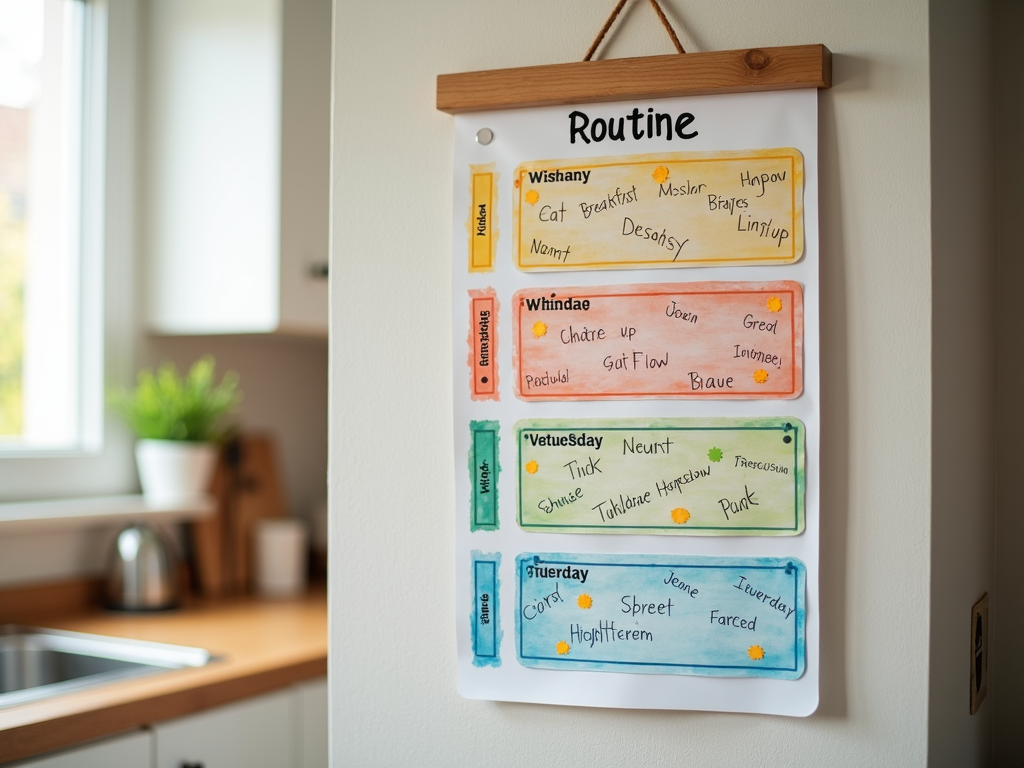Consistent routines give children the structure and security they need to thrive. Applied Behavior Analysis (ABA) provides parents with proven strategies to build and maintain these routines. This guide shares practical tips, personal experiences, and expert advice to help you create consistent routines for children.

Why Routines Are Essential for Kids
Routines help children feel safe and in control. Knowing what comes next each day cuts down on worry and builds confidence. They also teach skills like managing time and taking responsibility, which stick with them as they grow.
Studies show kids with steady routines often sleep better, behave well, and handle changes more easily. As a parent, I’ve seen this firsthand—when my daughter knows what to expect, she’s calmer and more willing to cooperate.

What Is Applied Behavior Analysis?
Applied Behavior Analysis, or ABA, is a method that studies how behavior works and how to change it for the better. It’s often used in therapy for autism, but its ideas work for all kids. ABA focuses on encouraging good habits through rewards and clear steps.
For parents, ABA offers tools to shape daily life. It’s not about being strict—it’s about setting up a system where kids want to follow along. Let’s look at some Applied Behavior Analysis strategies for parents that make routines stick.

Key ABA Strategies for Building Routines
Here are five ABA techniques to try:
- Reward Good Behavior: Praise or give a small treat when your child follows the routine.
- Set Clear Goals: Tell them exactly what to do, like ‘put on pajamas’ before bed.
- Use Visual Aids: Make a chart with pictures of each step.
- Stay Consistent: Keep the same order every day, no matter who’s in charge.
- Take It Slow: Add new parts to the routine bit by bit.
I started using a sticker chart for my son’s morning tasks. After a week of earning stickers for getting dressed on time, he was excited to do it himself. Small rewards can go a long way!

A Sample Daily Routine for Kids
Here’s an example to get you started:
| Time | Activity |
|---|---|
| 7:00 AM | Wake up, get dressed |
| 7:30 AM | Breakfast |
| 8:00 AM | School or play |
| 12:00 PM | Lunch |
| 1:00 PM | Quiet time or nap |
| 3:00 PM | Outdoor play |
| 5:00 PM | Dinner |
| 6:00 PM | Family time |
| 7:00 PM | Bath, bedtime steps |
| 8:00 PM | Lights out |
This table keeps things simple. Adjust the times and activities to fit your family’s needs. The goal is a predictable flow that everyone can follow.

My Experience with Routines
When my kids were younger, mornings were a mess—rushing, tantrums, you name it. Then I tried ABA ideas. We made a visual schedule with pictures for breakfast, brushing teeth, and packing bags. It wasn’t perfect overnight, but after a month, they knew the drill.
Flexibility matters too. If we’re out late, we still do bath and storytime, just quicker. Keeping the main parts steady helps them feel secure, even when life gets busy.

When to Use Behavioral Therapy
Sometimes, routines don’t click on your own. Behavioral therapy can step in to tackle tough spots—like a child who fights bedtime every night. A therapist can pinpoint what’s going wrong and suggest fixes.
I once worked with a therapist who showed us how to use a timer and rewards to ease my son into naptime. It took patience, but it worked. Behavioral therapy gives you tailored tools when you’re stuck.

How Family Therapy Can Help
Routines work best when everyone’s on board. Family therapy brings parents, siblings, and even grandparents together to agree on the plan. It’s about teamwork—making sure the whole house supports the same habits.
In our family, therapy helped my husband and me sync up. We stopped sending mixed signals, and our kids stopped testing the limits. It’s amazing what happens when you’re all on the same page.

Practical Tips to Get Started
Ready to create consistent routines for children? Try these:
- Start Small: Pick one routine, like bedtime, and build from there.
- Get Kids Involved: Let them pick a reward or draw their chart.
- Be Patient: Habits take weeks to form—don’t give up.
- Cheer Them On: Say ‘great job’ when they follow through.
- Tweak It: Change things as they grow or if something’s not working.
One trick that worked for us: letting my daughter choose between two bedtime stories. It gave her control but kept the routine intact. Little choices can make a big difference.

Wrapping It Up
Building consistent routines for children takes time, but it’s worth it. Using Applied Behavior Analysis strategies for parents, you can create a home where kids feel safe and happy. Mix in some flexibility, lean on behavioral therapy or family therapy if needed, and watch your family thrive.
Every child is different, so find what fits yours. Stick with it, and soon, these routines will feel like second nature.
Discuss Here